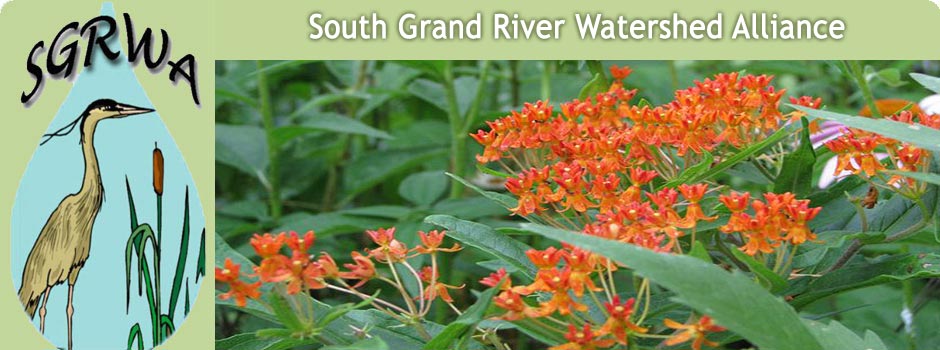In recent years, the use of native plants in landscapes, both large and small, has been highly recommended as an action people can take to improve water quality and quantity. Native plants are those that have evolved in a region over thousands of years and are adapted to the soils and climate of the region.
There are several reasons native plants are so effective in improving water quality and quantity. One major attribute of the native plants is the exceptionally long root system of many species. Root lengths typically range from six to fifteen feet or more in native plants as opposed to about six inches (for typical turf grass) and three to four feet for many non native ornamental plants. Long roots are very effective in filtering pollutants from stormwater, aiding groundwater absorption and preventing erosion.
With native plantings crucial habitat is provided for native birds, butterflies and other species. Thus, a riparian corridor of native trees, shrubs, grasses and flowers is essential for healthy streams.
One change the European settlers brought to our landscape, without realizing the potential consequences, was the plants from their homeland. Many of these plants/seeds were intentionally brought to establish familiar crops while others were brought as ornamentals for their homes. Many others were and still are accidentally and intentionally introduced. In recent years, many regulations have been put in place in an effort to prevent the importation of plants and animals that have the potential to take root or become established in our ecosystems.
While a number of these plants have not posed any problem, at least not so far, many have become established and aggressive. It is estimated that more than $120 billion per year is spent trying to eradicate or control these threats to our natural systems and croplands. Farmers spend much money, time and effort to control invasions of the non native sericea lespedeza, Johnson’s grass, cut leaf teasel, kudzu and others that can quickly overtake their pastures and crops.
Riparian corridors and other natural areas are increasingly overrun with the invasive exotic bush honeysuckle, garlic mustard, and wintercreeper, to name a few, that wipe out populations of our native woodland flowers. Introduced invasive species are second only to habitat destruction as threats to biodiversity.
In the South Grand River Watershed it is easy to spot invasions of bush honeysuckle in the fencerows and wooded areas in the early spring and late fall. They are very visible since they are the first plant to put out green leaves in the spring and the last to shed leaves in the fall. That significant characteristic is one reason it is such a threat to native species. The early leafing shades the forest floor in the spring, preventing the native spring bloomers from receiving the necessary sun and warmth. Cut leaf teasel is another exotic invader that can be spotted in clusters along the roadside in our area. It is adaptable to both wet and dry growing conditions and its large basal rosette growth pattern smothers native vegetation.
There are actions we can each take to diminish the aggressive exotic plant threat and improve the health of our watershed. Three very important actions are to become acquainted with these species in your own area; remove any from your property; and replant the area with native plants. Visit www.grownative.org for information about native plantings.
